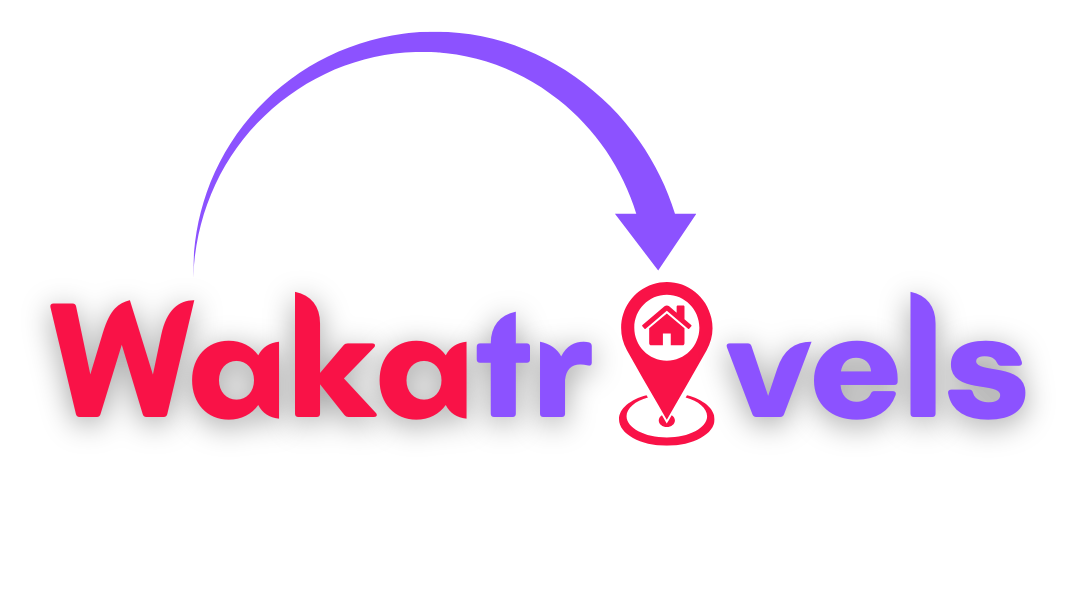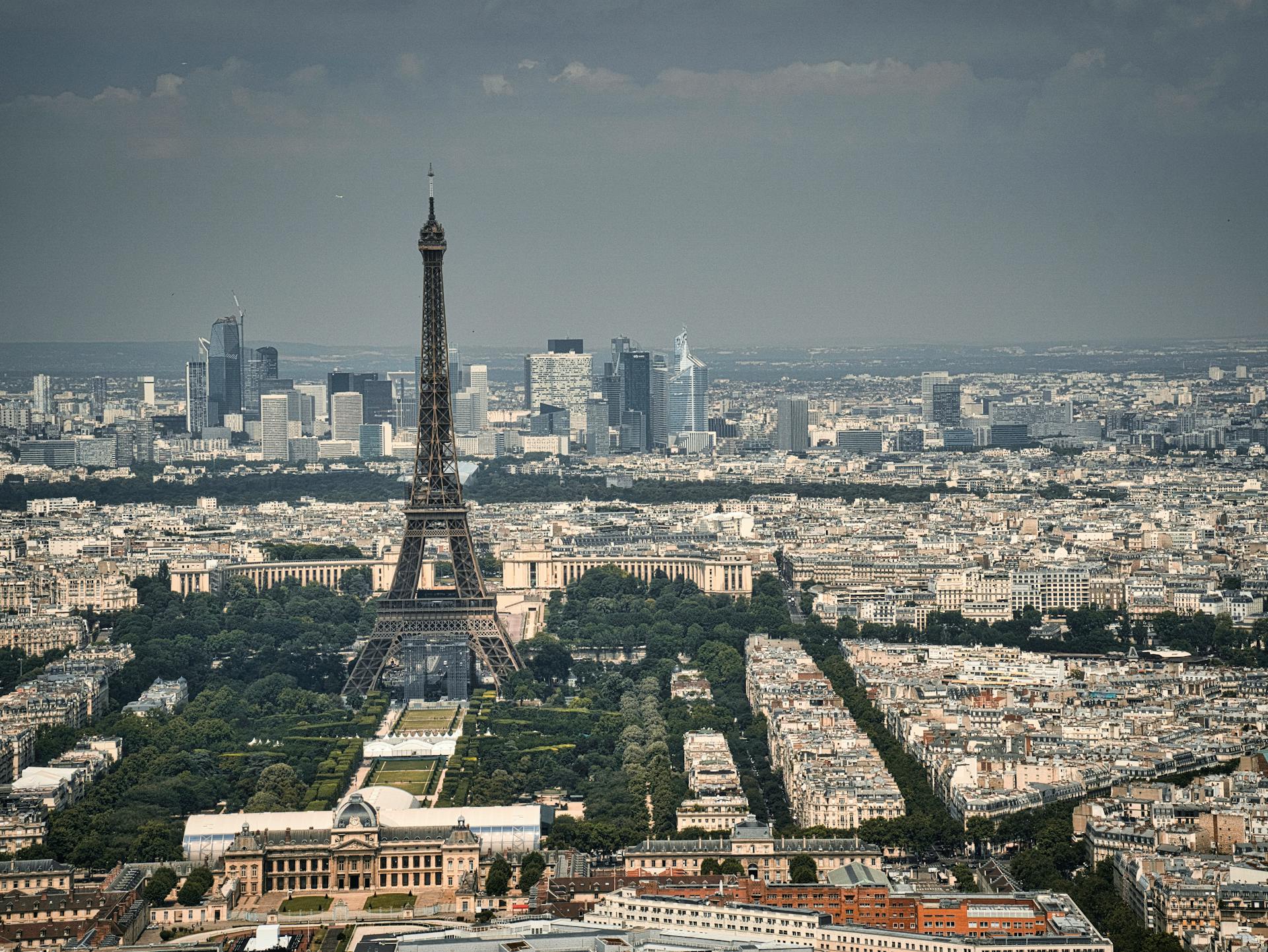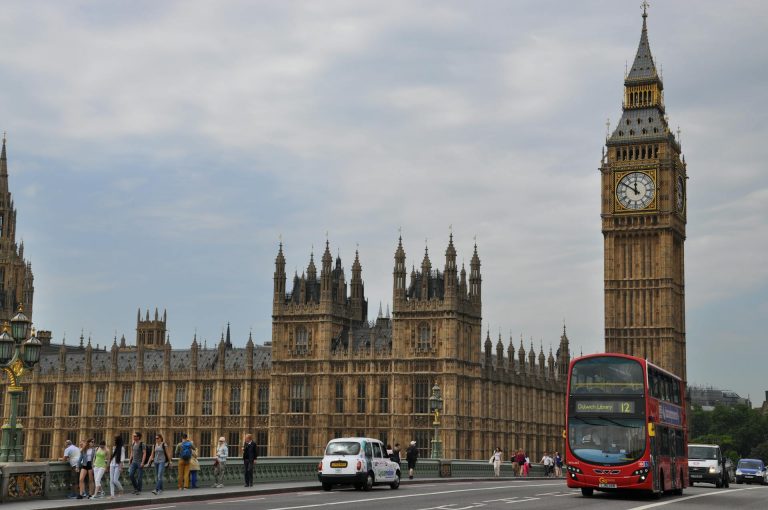Eiffel Tower: The Icon of Paris – A Complete Guide for Travelers
The ultimate guide to experiencing Paris’s most famous landmark, with insider tips you won’t want to miss.
Have you ever dreamed of standing beneath the magnificent iron lattice of the Eiffel Tower, watching as it sparkles against the night sky? I certainly had, and let me tell you, when I finally made it to Paris, the real thing was even more impressive than I’d imagined.
Whether it’s your first visit to the City of Light or you’re a seasoned Paris traveler, the Eiffel Tower remains an irresistible attraction that continues to capture hearts worldwide. In this guide, I’ll share everything you need to know about visiting this iconic landmark, from its fascinating history to practical tips that will help you make the most of your experience.
10 Fascinating Facts About the Eiffel Tower
1. A Controversial Beginning
The Eiffel Tower wasn’t always beloved by Parisians. When Gustave Eiffel’s company built this striking structure for the 1889 World’s Fair, many prominent artists and intellectuals protested it vehemently. They called it an “useless and monstrous” eyesore that would dominate Paris like a “gigantic black factory chimney.” How times have changed! Today, it’s impossible to imagine Paris without its most recognizable symbol.
2. A Marvel of 19th-Century Engineering
Standing at an impressive 330 meters (1,083 feet), the Eiffel Tower reigned as the world’s tallest man-made structure for 41 years until the completion of the Chrysler Building in New York in 1930. What’s truly remarkable is that this massive iron structure weighs only 10,100 tons and exerts less pressure on the ground than a person sitting in a chair!

3. A Temporary Attraction That Became Permanent
Did you know the Eiffel Tower was originally intended to be a temporary installation? It was scheduled for demolition in 1909, just 20 years after its construction. Fortunately, its value as a radio transmission tower saved it from destruction. I’m certainly grateful for that decision every time I see its elegant silhouette against the Parisian sky.
4. A Rainbow of Colors
While we now associate the Eiffel Tower with its distinctive “Eiffel Tower Brown” color, it hasn’t always worn this shade. The tower has been painted approximately once every seven years throughout its history, sporting colors from reddish-brown to yellow-ochre and chestnut brown. The current color, officially called “Eiffel Tower Brown,” was specially designed to complement the Parisian landscape.
5. A Masterpiece of Mathematics
Look closely at the tower’s structure, and you’ll notice its graceful curve isn’t just for aesthetic appeal. Gustave Eiffel, who was an experienced bridge builder, designed this curve to counteract wind forces. The mathematical precision of the tower makes it one of the most stable structures of its height ever built.
6. A Hot Destination (Literally)
When the sun beats down on the tower, its metal expands, causing the entire structure to grow taller! On a hot day, the Eiffel Tower can grow by up to 15 centimeters (6 inches). It also leans slightly away from the sun as the metal on the sunny side expands more than the shaded side.
7. An Illuminating Spectacle
The tower’s evening light show is a relatively new addition. The first light show was installed for the 1985 New Year’s Eve celebration, and the now-famous sparkling lights (consisting of 20,000 bulbs) were added to celebrate the new millennium in 2000. The five-minute sparkling display that occurs on the hour every evening is actually copyrighted, which is why you won’t find photos of the nighttime sparkling tower used commercially.
8. A Record-Breaking Visitor Attraction
With almost 7 million visitors annually (pre-pandemic), the Eiffel Tower is the most-visited paid monument in the world. Since its opening, it has welcomed over 250 million visitors. That’s more than the entire population of the United Kingdom and France combined!
9. A Natural Lightning Rod
The tower is struck by lightning approximately 50 times per year. Gustave Eiffel installed lightning rods at the top, making the tower serve as a giant lightning rod that protects the surrounding area.
10. A Symbol of Romance
The Eiffel Tower has witnessed countless marriage proposals, romantic dinners, and love declarations. It’s no wonder Paris is known as the City of Love when it has such a magnificent backdrop for romance.

How to Visit the Eiffel Tower: Practical Information
Ticket Options and Prices
One of the first questions I hear from friends planning their Paris trip is about ticket prices. Here’s a breakdown of the current options:
| Access Level | Adult Price (18+) | Youth Price (12-17) | Child Price (4-11) |
|---|---|---|---|
| 2nd Floor Elevator | €11.30 | €5.60 | €2.80 |
| 2nd Floor Elevator | €17.10 | €8.60 | €4.30 |
| Summit (includes 2nd floor) | €28.30 | €14.10 | €7.10 |
Note: Children under 4 enter free. Prices are subject to change, so check the official website before your visit.
Pro tip: If you’re physically able, taking the stairs to the 2nd floor is not only cheaper but often means shorter lines. Plus, it gives you time to appreciate the tower’s amazing structure up close. I took the stairs during my last visit and discovered fascinating details about the tower’s construction from the informative displays along the way.
Best Times to Visit
Timing your visit can make a huge difference in your experience. Here’s what I’ve learned:
To Avoid Crowds:
- Early morning (opening time) on weekdays
- During lunch hours (around 1 PM)
- Late evening (after 9 PM)
For Special Experiences:
- Sunset for magical city views as the lights come on
- First thing in the morning for the clearest city views
- 11 PM to see the final sparkling light show of the day
The tower is generally less crowded during winter months, though the weather may be less pleasant. I visited in late February and practically had the place to myself on a Tuesday morning!
Elevator vs. Stairs: Making the Choice
While taking the elevator is the most popular option, climbing the stairs offers a unique experience:
Elevator Advantages:
- Quick and effortless
- Essential for those with mobility issues
- The only way to reach the summit
Stairs Advantages:
- Shorter queues
- Lower ticket price
- A more immersive experience
- Great exercise (674 steps to the 2nd floor)
- Interesting exhibitions along the way
I recommend a hybrid approach: climb the stairs to the 2nd floor, take in the views, and then decide if you want to purchase a summit ticket from there.
How Long to Spend at the Eiffel Tower
Plan to spend at least 2-3 hours at the Eiffel Tower. This gives you enough time to:
- Navigate security (which can take 30+ minutes during peak times)
- Climb or ride to your chosen level
- Enjoy the views from different perspectives
- Visit the restaurants or shops if desired
- Take photos from various angles
If you’re planning to dine at one of the tower’s restaurants, add an additional 1-2 hours to your visit.
Dining at the Eiffel Tower: A Meal with a View
Le Jules Verne: Fine Dining in the Sky
Located on the 2nd floor, Le Jules Verne offers a Michelin-starred dining experience with panoramic views of Paris. The restaurant serves contemporary French cuisine prepared by renowned chefs. Prices are definitely on the higher end (expect to pay €190-€250 per person for dinner), but the combination of exquisite food and unparalleled setting makes it a once-in-a-lifetime experience.
Reservation tip: Book at least 2-3 months in advance, especially for dinner and weekend lunch slots.
58 Tour Eiffel: Casual Dining with Style
On the first floor, 58 Tour Eiffel (recently renamed Madame Brasserie) offers a more accessible dining option without sacrificing quality or views. The restaurant transforms from a casual picnic-style lunch venue to a more sophisticated brasserie in the evening. Lunch menus start around €42, while dinner begins at about €85 per person.
I had lunch here during my visit and was pleasantly surprised by both the quality of the food and the relaxed atmosphere. The floor-to-ceiling windows offered spectacular views of Paris while we dined on classic French dishes.
The Champagne Bar: Toast at the Top
At the summit, you’ll find a champagne bar where you can toast your achievement with a glass of bubbly while enjoying views from the highest accessible point of the tower. While prices are steep (about €15-€25 per glass), the experience of sipping champagne at the top of the Eiffel Tower is pretty unforgettable.
7 Best Photo Spots for Capturing the Eiffel Tower
1. Trocadéro Gardens
This is arguably the most popular spot for Eiffel Tower photos, offering a direct view across the Seine River. The elevated position provides a perfect angle for those classic symmetrical shots. I recommend arriving before sunrise to avoid crowds and capture beautiful morning light.
2. Champ de Mars
The large park extending from the Eiffel Tower provides great close-up views and plenty of space for creative compositions. It’s also ideal for picnics with the tower as your backdrop.
3. Pont de Bir-Hakeim
This double-decker bridge offers a unique framed view of the Eiffel Tower through its distinctive columns. Film buffs might recognize it from movies like “Inception” and “Last Tango in Paris.”
4. Rue de l’Université
For that perfect Parisian street view with the Eiffel Tower looming large at the end, this narrow street in the 7th arrondissement is unbeatable. The residential buildings lining both sides create a perfect frame.
5. Seine River Cruise
Viewing the Eiffel Tower from the water offers a constantly changing perspective as you cruise along the Seine. The reflection of the tower’s lights on the water at night is simply magical.
6. Avenue de Camoens
This hidden gem in the 16th arrondissement offers an elevated view of the Eiffel Tower with classic Haussmannian buildings in the foreground – it’s the quintessential Paris shot without the crowds.
7. Montparnasse Tower Observation Deck
For a view that includes the Eiffel Tower in the context of the Paris skyline, head to the observation deck of Tour Montparnasse. Some say it offers the best view in Paris because it’s the only place where you can’t see the somewhat out-of-place Montparnasse Tower itself!
The Eiffel Tower After Dark: A Luminous Experience
![Insert image of the Eiffel Tower light show at night here]
The Eiffel Tower transforms as the sun sets, putting on a dazzling light display that’s just as iconic as its daytime silhouette. Here’s what to know about experiencing the tower at night:
The Hourly Sparkle
Every hour on the hour, from sunset until 1 AM (2 AM in summer), the tower puts on a 5-minute light show where thousands of sparkling lights create a magical effect. This display is different from the regular golden lighting that illuminates the tower each night.
The first time I saw the sparkling lights, I was sitting at a café across the river, not expecting the show. When it suddenly began, everyone around me gasped and reached for their cameras. Even the locals stopped to admire it!
Evening Access
The tower stays open until 11:45 PM (last elevator ascent at 11 PM) from mid-June to early September, and until 10:45 PM (last elevator at 10 PM) the rest of the year. Visiting at night offers a different experience with the city lights spreading below you like a glittering carpet.
Night Photography Tips
- Use a tripod if possible for long-exposure shots of the light show
- Try silhouette shots from Trocadéro with people in the foreground
- Capture the reflection of the lights in the Seine for added drama
- The blue hour (just after sunset) provides a beautiful contrast with the tower’s golden lights
Beyond the Tower: Nearby Attractions
The area surrounding the Eiffel Tower is packed with other attractions worth exploring. Here are the top places to visit before or after your tower experience:
1. Seine River Cruises
Numerous river cruise companies operate from the docks near the Eiffel Tower. A one-hour cruise offers a unique perspective of Paris’s major monuments and is a relaxing way to complement your tower visit.
2. Champ de Mars
This large public park extending from the Eiffel Tower is perfect for relaxing after your visit. On warm days, you’ll find locals and tourists alike enjoying picnics on the grass.
3. Les Invalides
Just a 15-minute walk from the Eiffel Tower, this complex houses museums related to France’s military history and Napoleon’s tomb. The golden dome is a highlight of the Paris skyline.
4. Musée du Quai Branly
Located right beside the Eiffel Tower, this museum showcases indigenous art and cultures of Africa, Asia, Oceania, and the Americas. Its living wall exterior is an attraction in itself.
5. Rue Cler
This charming market street offers a glimpse of everyday Parisian life. It’s lined with specialty food shops, cafés, and restaurants – perfect for assembling a picnic to enjoy at Champ de Mars.
5 Tips for a Smooth Eiffel Tower Experience
After several visits to the Eiffel Tower, I’ve gathered some practical advice to help make your experience as enjoyable as possible:
1. Book Tickets in Advance
The official website allows you to book timed entry tickets up to two months in advance. This is absolutely essential during peak season (April-September) when same-day tickets often sell out by mid-morning.
2. Security Awareness
All visitors must pass through security checkpoints before entering the tower grounds. Prohibited items include large luggage, glass bottles, and sharp objects. The security lines can add 30+ minutes to your visit during busy periods, so factor this into your planning.
3. Weather Considerations
Check the weather forecast before booking. On foggy or very windy days, the summit may close, and views can be significantly diminished. However, if you’re flexible, visiting just after a rainstorm can reward you with exceptionally clear views and smaller crowds.
4. Accessibility Information
The Eiffel Tower has made efforts to improve accessibility. Elevators can accommodate standard wheelchairs, and the 1st and 2nd floors are fully accessible. The summit has some limitations due to the historic nature of the structure. Reduced-rate tickets are available for visitors with disabilities and their companions.
5. Avoiding Scams
In the areas around the Eiffel Tower, be wary of petition scams, bracelet makers, and unofficial “skip-the-line” ticket sellers. Purchase tickets only from the official website or ticket booths. Keep valuables secure, as the crowded areas attract pickpockets.
When is the Best Time to Visit the Eiffel Tower?
The ideal time to visit depends on your priorities:
For Minimal Crowds:
- November through February (except during holidays)
- Weekday mornings before 10:30 AM
- Weekday evenings after 8:30 PM
For Best Weather:
- May through September offers mild temperatures and longer daylight hours
- Early October often has beautiful clear days with fewer tourists
For Special Experiences:
- July 14th (Bastille Day) features spectacular fireworks launched from the tower
- New Year’s Eve often includes special light displays
- Valentine’s Day for a romantic experience (though expect crowds)
The Evolving History of the Eiffel Tower
Birth of an Icon: 1887-1889
Construction of the Eiffel Tower began in January 1887 and was completed in record time – just 2 years, 2 months, and 5 days. The tower was inaugurated on March 31, 1889, though it wasn’t opened to the public until May 15, just in time for the 1889 World’s Fair.
Gustave Eiffel and his team of 300 workers assembled 18,038 iron pieces using 2.5 million rivets to create this engineering marvel. The precision was remarkable – holes for the rivets were calculated and drilled to an accuracy of 0.1mm, and not a single worker died during the construction (unusual for projects of this scale at that time).
From Controversy to Acceptance: 1889-1930
Though initially planned as a temporary 20-year installation, the tower found new purpose with the advent of radio transmission. Eiffel himself advocated for its scientific usefulness, conducting experiments in meteorology, physics, and radio communications from the structure.
During World War I, the tower played a crucial role by jamming German radio communications, helping capture the spy Mata Hari, and transmitting vital military messages. This utility helped cement its place in Parisian culture and identity.
Modern Era: 1930-Present
Over the decades, the Eiffel Tower has undergone numerous renovations and updates. New elevators, restaurants, and visitor facilities have been added, while maintaining the historic integrity of the structure. In 1957, a broadcast antenna was added to the top, increasing its height to the current 330 meters.
In 2017, a bulletproof glass wall was installed around the tower’s base as a security measure, and ongoing renovation projects continue to ensure this iconic structure stands for generations to come.
Final Thoughts: The Enduring Charm of the Eiffel Tower
There’s something truly special about the Eiffel Tower that transcends its status as a tourist attraction. Perhaps it’s the way it transforms throughout the day – from a delicate silhouette at dawn to a golden beacon at sunset to a sparkling marvel at night. Or maybe it’s how it stands as both a triumph of human engineering and a symbol of artistic beauty.
Whatever the reason, experiencing the Eiffel Tower firsthand creates memories that last a lifetime. Whether you’re admiring it from afar, picnicking in its shadow, or standing at its summit gazing out over Paris, the “Iron Lady” continues to captivate and inspire visitors from around the world.
As Gustave Eiffel himself said in defense of his creation: “I ought to be jealous of the tower. It is more famous than I am.” More than a century later, his tower remains the defining symbol of Paris – a testament to human creativity, ingenuity, and the pursuit of beauty.




Thank you for your shening. I am worried that I lack creative ideas. It is your enticle that makes me full of hope. Thank you. But, I have a question, can you help me?